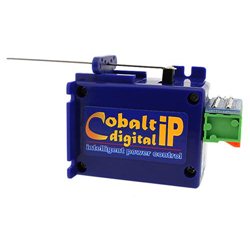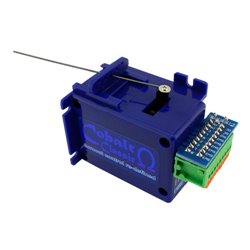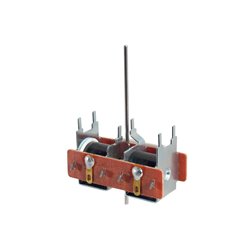The most common wood for baseboards is probably chipboard as this is relatively inexpensive. Plywood is another...
No products
Product successfully added to your shopping cart
There are 0 items in your cart. There is 1 item in your cart.
Search Tips
Christmas and New Year
We are dispatching orders every weekday apart from Christmas Day, Boxing Day and New Year's Day.
If you order is time critical, select next day delivery at checkout.
The shop in Sandown is closed from 25th December, reopening on 30th December.
What are my options for motorising points on an N Gauge layout?
There are several options for motorising points on an N Gauge layout. Here are some of the most common methods:
Solenoid motors: Solenoid motors are the most common method for motorising points. They are easy to install and are compatible with most N Gauge point types. Solenoid motors use a small electromagnet to move the point blades. They can be operated using a switch or a control panel.
Tortoise motors: Tortoise motors are slower and more powerful than solenoid motors. They are quieter and have a more realistic movement. Tortoise motors can be used with most N Gauge point types, but they require a little more work to install than solenoid motors.
Servo motors: Servo motors are a newer option for motorising points. They are precise and can be programmed to stop at specific points. Servo motors are more expensive than solenoid and tortoise motors, but they offer a higher level of control and flexibility.
Cobalt motors: Cobalt motors are similar to Tortoise motors in that they are slow and powerful. They offer a more realistic movement than solenoid motors but they are also more expensive. Cobalt motors can be used with most N Gauge point types.
Wire-in-tube: Wire-in-tube is a manual method for operating points. It involves running a wire from the point to a control panel and using a lever to move the point blades. Wire-in-tube is a simple and inexpensive option but it is not as precise as the other methods and requires more physical effort and may not be practical on larger or complicated layouts.
Overall, the choice of motorising points on an N Gauge layout will depend to a large extent on the personal preference of each individual modeller. Other factors involved include the available budget and the specific requirements of the layout. Solenoid motors are the most common and affordable option, while Tortoise, Cobalt and Servo motors offer greater precision and control.
Click here to receive the tips weekly in your mailbox. You can unsubscribe at any time.










